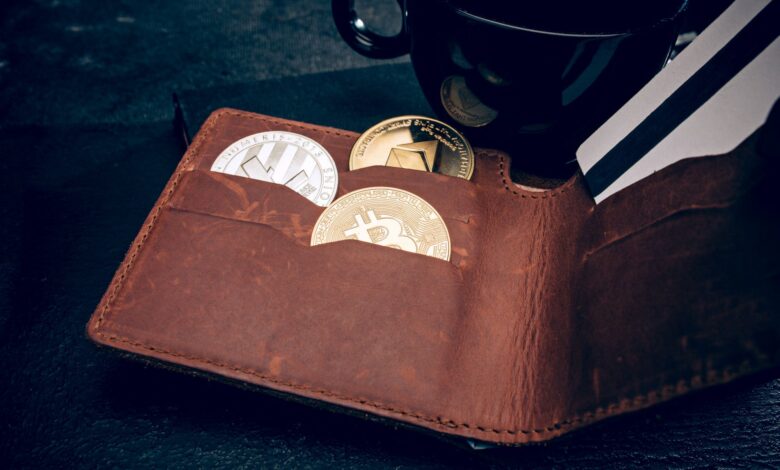Selling Old Gold to Beat Inflation’s Damage to Your Wallet

One of the biggest problems with inflation involves how much it eats up from a household cash flow. Inflation affects all goods and services, but people feel it the most in daily purchase the most. Food goes up a tremendous amount, something near 50 to 80 percent at times. And that removes the other benefit people are used to monthly – discretionary income. The combination of higher staples and loss of discretionary income for anything else creates a mental double-whammy that gets reinforced month after month as the inflation effect continues. This is where selling gold and other precious metals becomes extremely helpful, providing both a financial break and a mental boost from the grind as well.
Where Does the Gold Come From?
In reality, most household have some bit of gold. It usually gets tucked away in dressers, boxes, old jewelry cases and similar. It can be a birthday gift, a high school ring, a bracelet, and even an old coin received for Christmas. As long as the gold is solid in form, it’s worth selling. Gold-plated items don’t count as they involve base metal with a thin sheen of gold electrostatically attached. Solid gold, however, can be worth quite a lot, especially these days, given the price of gold on the market.
Now, it’s important to remember that what gold is worth per ounce is not what one will receive for a ring, bracelet or similar. First, the quality of the gold makes a big difference. Gold comes in different qualities. 24-karat gold is the purist, with quality level at 99% or higher. Lower karat gold, however, is far more common. This is because mixing gold with other metals makes it stronger. So, jewelry and items that will get a lot of wear and manual use tend to be lower karats like 18, 14, 12 and 10. Where a 99% 24-karat gold necklace will be closer to market pricing, a 12-karat necklace of the same size and shape will be a lot less.
Secondly, selling gold to buyers means selling it at a cost price versus market levels. Gold buyers take the gold and resell it in bulk to commercial buyers. They in turn melt it, reuse the gold, and resell it to other consumers. So, with all those steps involved, each one wants to make a profit on what they buy. As a result, gold sold to a buyer will be priced lower than the market to allow room for that profit to arise. Still, the amount one can get for old jewelry and gold pieces can still be substantial.
What do Gold Buyers Purchase?
There is a wide assortment of goods, products, jewelry, collectibles and similar that can qualify for a gold sale to a buyer. It can range from everyday items to special anniversary or celebration gifts that might have been associated with a given event but now just sit in a drawer. Collectibles are frequently a common item as well, especially in the form of coins. And, of course, bullion gold can resell as well. Here are some of the more likely items found in homes with enough looking:
- Gold government-issued coins – These are coins that are minted by a government, which can be from anywhere, and the coin itself usually has the value and quality of gold stamped into it. These are actually some of the best gold to sell because the quality is verified and known by government issue. South African Krugerrand coins are a great example. There are older coins, however, which may not have a stamp quality clearly on them. Austrian Ducats are high quality gold but typically don’t have details of the amounts on them.
- Gold nuggets – Commonly placed in jewelry or sold as-is, these are gold in its natural form out of the ground. They are cleared of any other bits of dirt or rock, and represent natural gold before it has been refined. Ironically, this gold is not 100 percent pure, even being natural form. It can range in purity from 21 to 24 karats. Testing has to be done to confirm its purity, which a professional buyer can apply.
- Gold bullion – Those gold bars seen in movies are based on the real thing. Gold bullion is bulk gold melted into the form of a specific bar shape that has a specific weight and purity. Often sold to consumers as a large form of gold investment, bars come in smaller to full-sized shapes of ingots. Again, due to purity and minting quality, these gain top dollar from buyers.
- Gold jewelry – The most common form of gold consumers tend to have. Jewelry can be in the form of necklaces, earrings, rings, bracelets, brooches and more. It comes in varying qualities of gold, with the finer gold used in pieces that are for display, such as thin necklaces and earrings, and lower-quality gold used on items that see more wear and tear, such as rings and watches. Gold has been used in jewelry and adornments for centuries, and jewelry remains one of the most powerful forms of family wealth passed down by generations.
- Scrap gold – This includes anything made of solid gold that is broken, leftover, bits, or pieces. The key factor is that there is no other element in the gold such as stones or mixed metals. As long as the gold is pure, it can be sold for scrap value, depending on the karat quality involved.
- Gold watches – These tend to be a lower karat quality due to heavy use on the wrist and hand, but the band and watch frame itself can be incredibly valuable for resale.
Other Options Exist Too
Remember, there are other options for resale too. Gold isn’t the only thing in demand with jewelry resellers. Exotic stones, precious elements jewelry & coin all have a strong demand for rebuy. However, with gold buyers, the items need to be solid gold for the best resale success. There are other options, but they go through channels specific for that given metal, stone or precious element involved. All of them, however, offer an effective way to beat inflation and damage to household cash flow.



